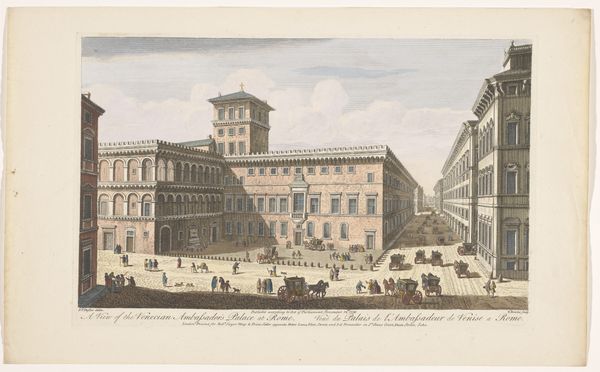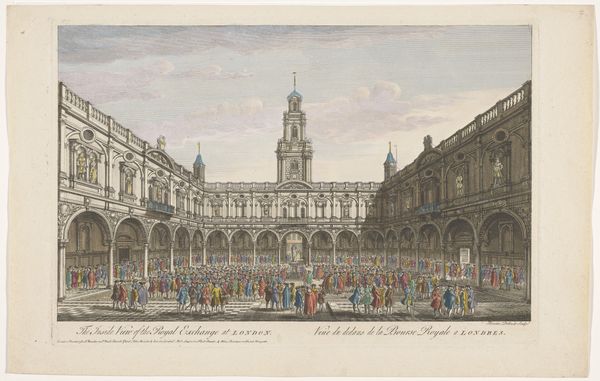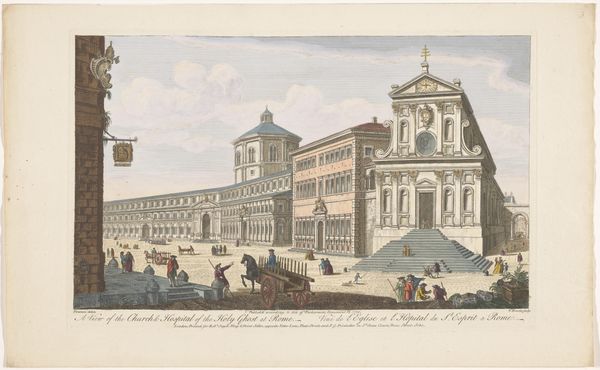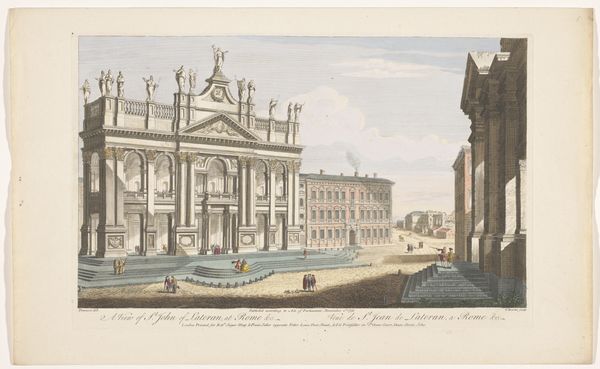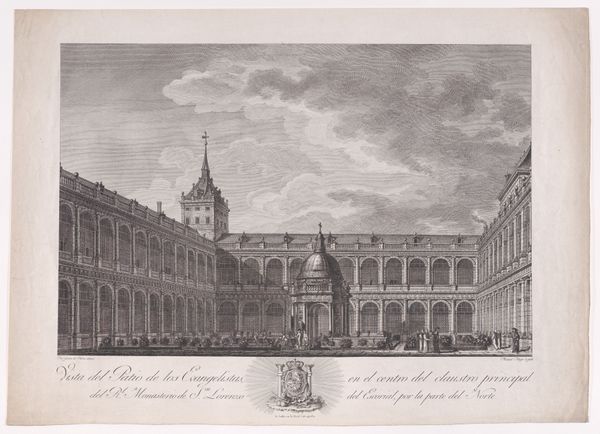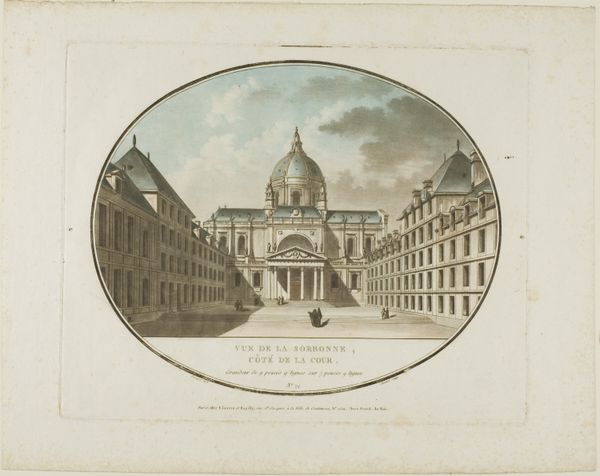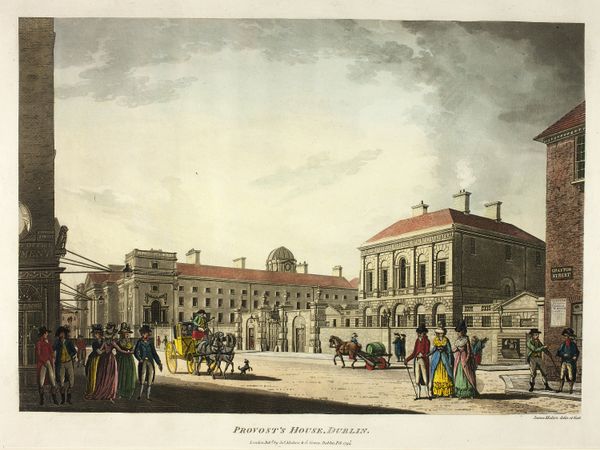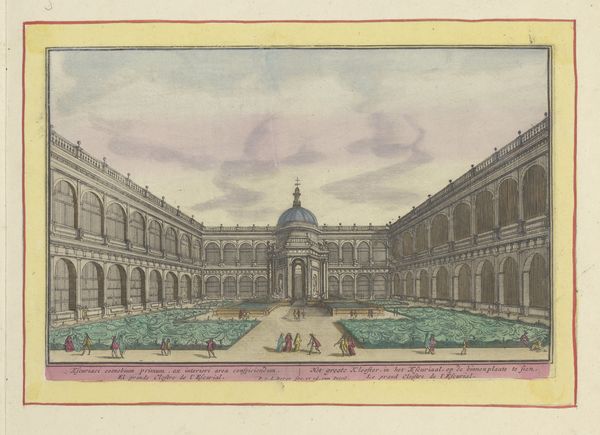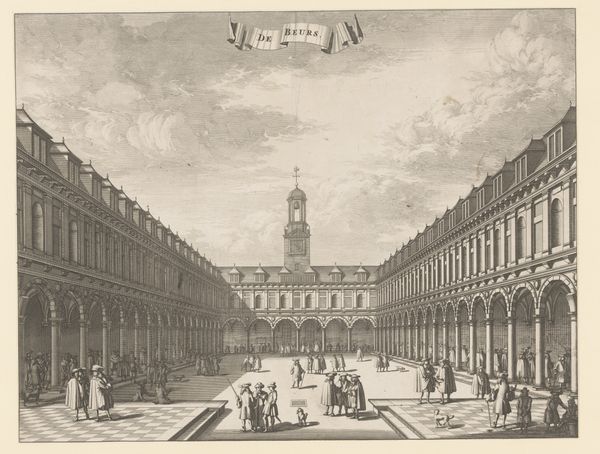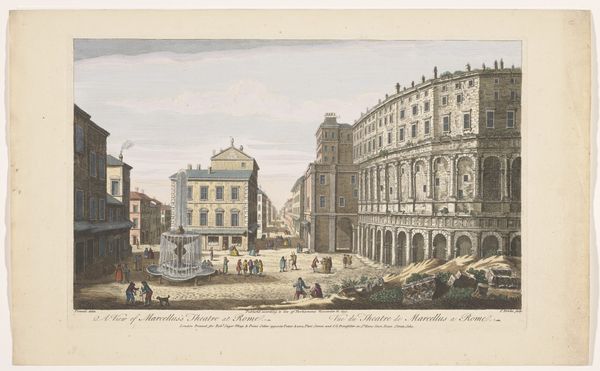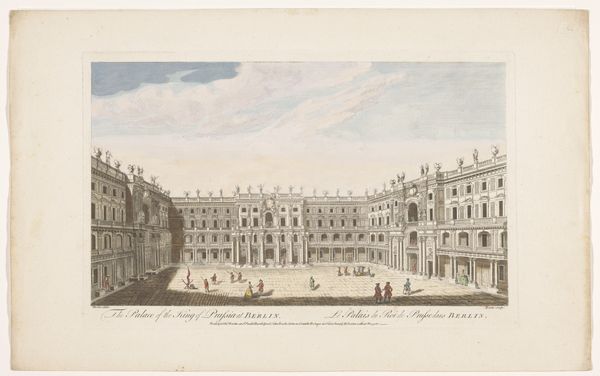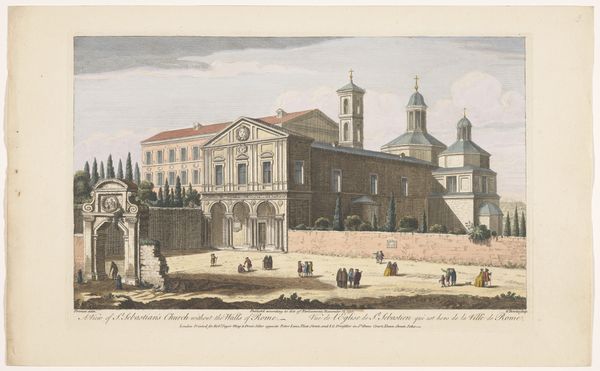
Zicht op de Patio de los Evangelistas van het Monasterio de San Lorenzo de El Escorial 1824 - 1840
0:00
0:00
drawing, print, etching, architecture
#
drawing
#
neoclacissism
# print
#
etching
#
landscape
#
19th century
#
cityscape
#
architecture
Dimensions: height 413 mm, width 565 mm
Copyright: Rijks Museum: Open Domain
Curator: Here we have a print titled "View of the Patio de los Evangelistas of the Monastery of San Lorenzo de El Escorial." It’s an etching made between 1824 and 1840 by Léon Auguste Asselineau. Editor: My first impression is of profound stillness. It's remarkable how Asselineau captures the weight and imposing geometry of the architecture, even through the medium of print. Curator: Asselineau was working during a time of significant artistic shifts. The rigidity and orderliness you see reflect the influence of neoclassicism, still prevalent in academic circles, despite the burgeoning Romantic movement that valued emotion and the sublime. Editor: The symbolism of enclosed spaces is intriguing. Courtyards often represent a sanctuary, a place of introspection. Here, though, the scale diminishes the individual. The monks seem dwarfed by the architecture, don’t you think? Curator: Precisely. San Lorenzo de El Escorial was built not just as a monastery but as a demonstration of Spanish imperial power under Phillip II. It functions as a monument and asserts state control. The Patio de los Evangelistas, with its religious associations, further reinforces this concept. Editor: Notice how the architectural style almost mimics classical Roman forums or enclosed gathering spaces, speaking volumes about power and influence through architecture. Curator: These architectural choices, of course, had immense political implications. The monastery was a focal point of artistic patronage, with royal authority influencing artistic taste and ideological messaging through buildings and architectural art of this sort. Editor: Ultimately, the visual elements here carry layers of emotional and political weight. It invites us to contemplate power, faith, and even human insignificance within vast symbolic structures. Curator: Reflecting on Asselineau’s etching, we see it serves not only as a depiction but also as a vital document connecting architecture, societal structures, and artistic evolution in the nineteenth century. Editor: Yes, seeing how visual symbols serve to solidify power gives you a great look into Spanish culture at the time.
Comments
No comments
Be the first to comment and join the conversation on the ultimate creative platform.
